Welcome to Fruits in El Salvador.
El Salvador is a small, tropical country located in Central America known for its beautiful beaches, lush forests, and delicious cuisine.
One of the things that makes Salvadoran cuisine so unique and flavorful is the abundance of fresh, tropical fruits that are grown in the country. From sweet and juicy mangoes to sour and tangy tamarind, there are so many delicious fruits to try in El Salvador.
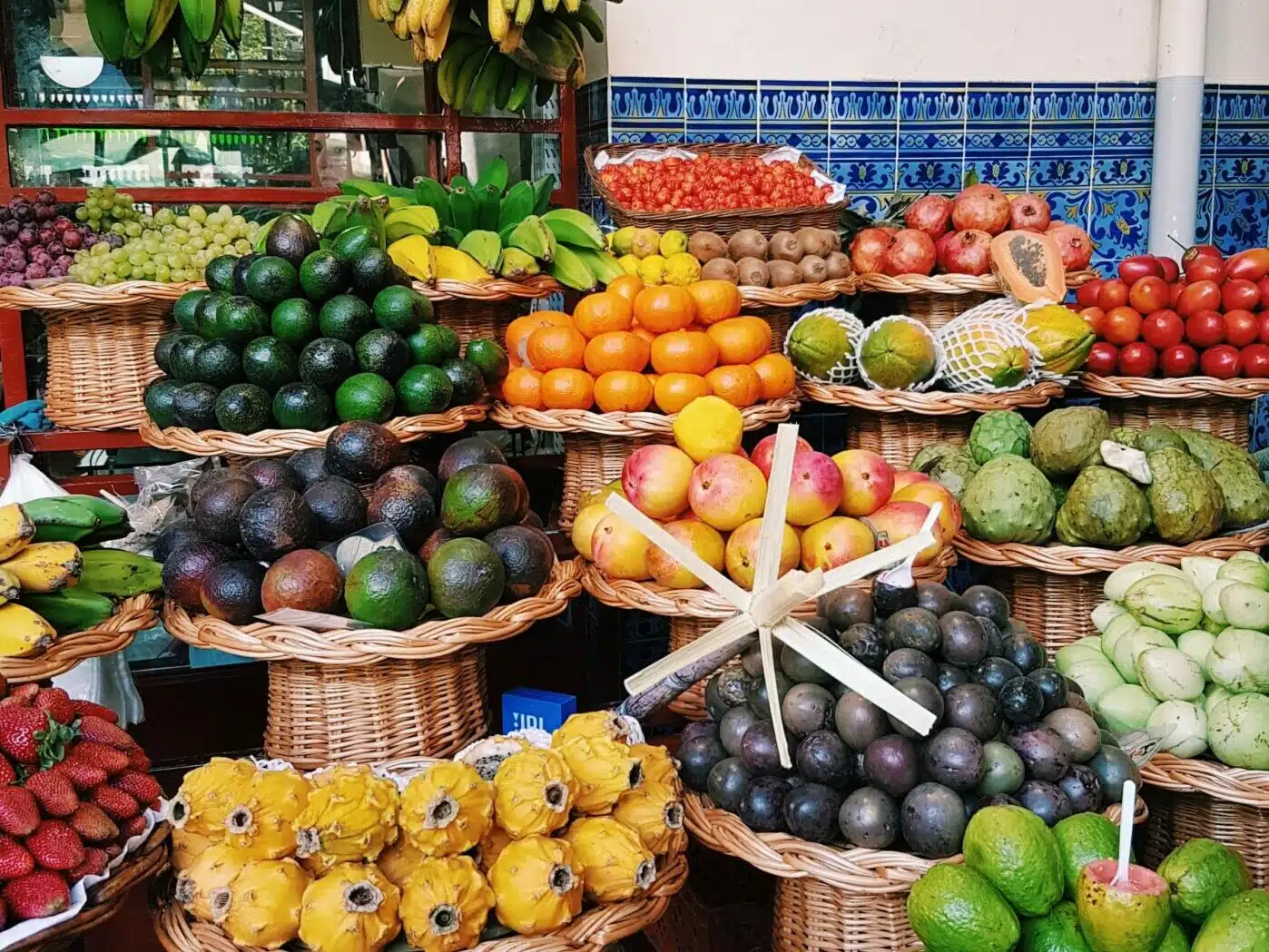
El Salvador is a haven for exotic fruits possessing an array of colors and unique flavors. These Salvadoran fruits mainly flourish during the wet season’s early months, from May to July. The abundance of Salvadoran fruits are most savory when consumed fresh. However, they are also utilized to create all kinds of confections and even utilized to produce traditional alcoholic beverages.
Exotic Fruits of El Salvador. Best Salvadoran Fruits to Try
El Salvador is home to a wide variety of tropical fruits that are grown in the country’s warm, humid climate. Some of the most popular and delicious fruits of El Salvador include:
1. Mangoes
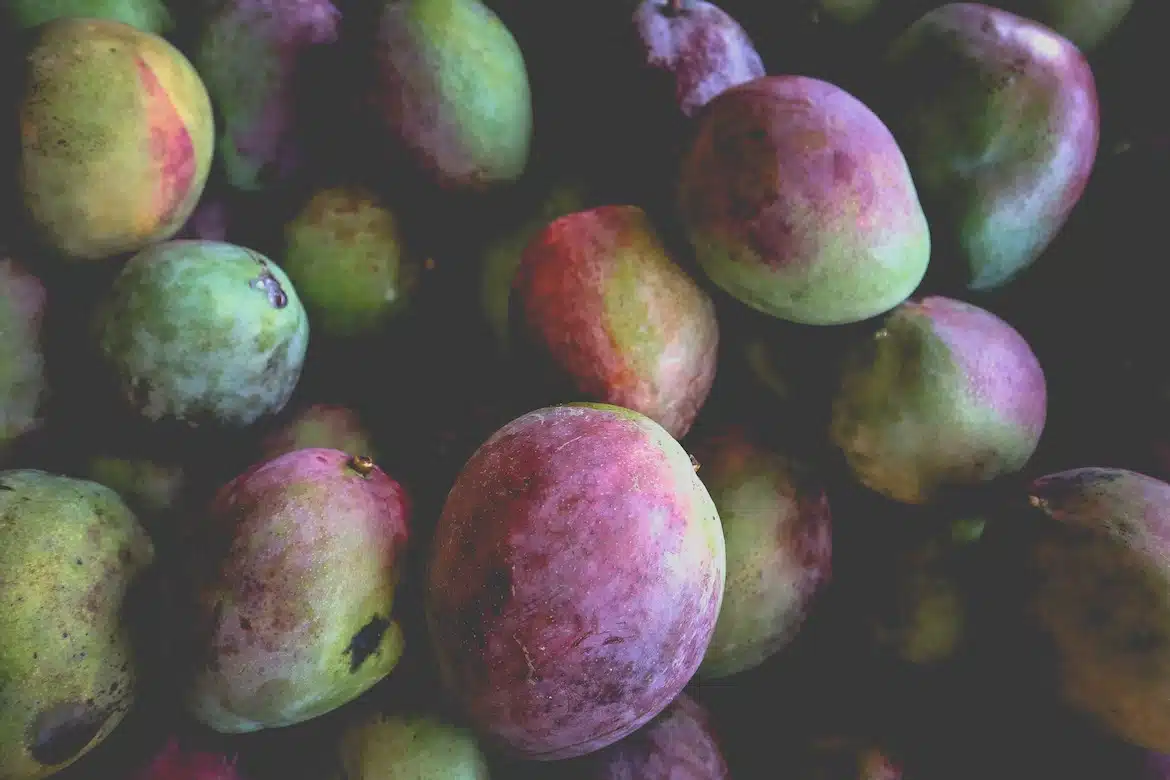
Sweet, juicy and flavourful, El Salvador is known for its delicious mangoes. Many varieties of mango are grown in El Salvador, including the Ataulfo, Tommy Atkins and Haden.
Mangoes are perhaps one of the most popular fruits in El Salvador. Many varieties of mango are grown in the country, including the Ataulfo, Tommy Atkins and Haden. These sweet, juicy fruits are often eaten raw or used in recipes such as mango smoothies and mango ice cream.
2. Mammee Apple
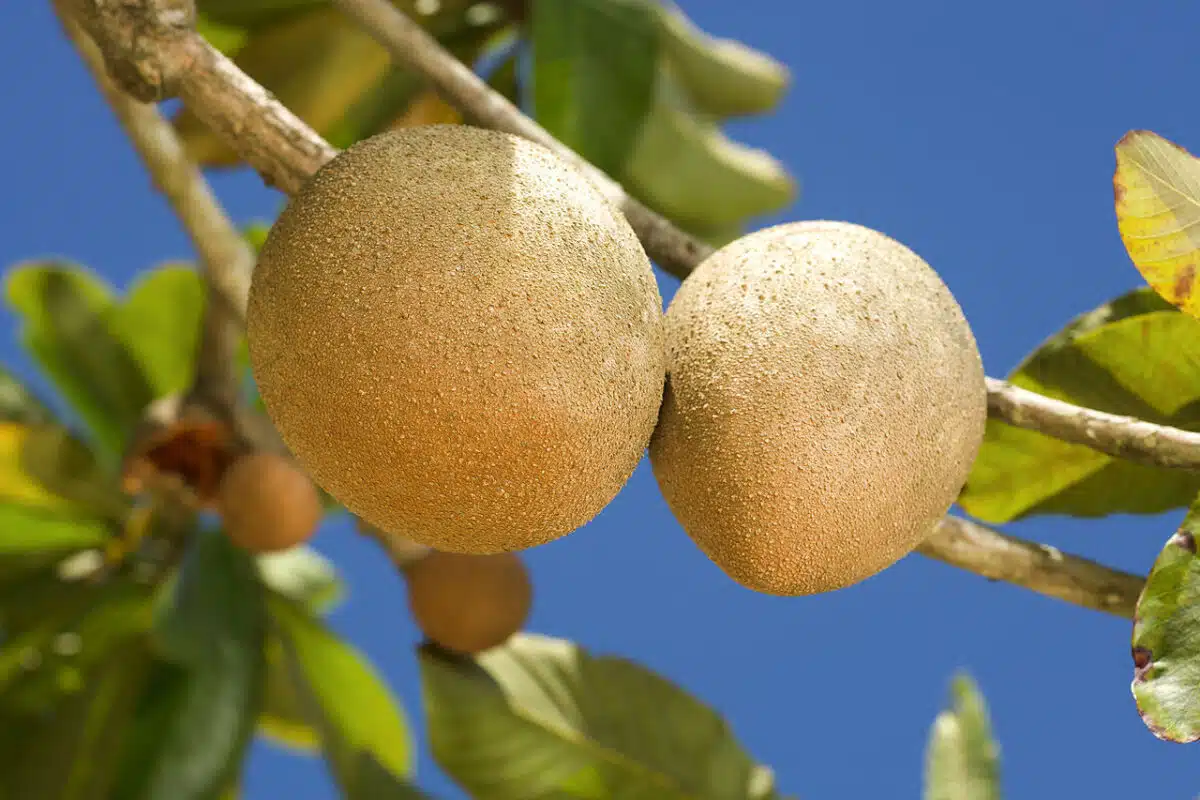
Mamey, also known as mammee apple, is a tropical fruit native to Central and South America, including El Salvador. It is known for its sweet, creamy flesh and its bright orange-red color. Mamey has a round or oval shape and a rough, bumpy skin. The flesh of the mamey is soft and sweet, with a flavor that has been described as a combination of sweet potatoes, pumpkin, and almonds.
Mamey is a good source of nutrients, including vitamins A and C, potassium, and fiber. It is often eaten raw, sliced, or in fruit salads. It is also used in cooking, particularly in desserts like ice cream, smoothies, and puddings.
In El Salvador, mamey is a popular fruit and can be found at markets and grocery stores throughout the country. If you’re planning a trip to El Salvador, be sure to try some mamey and experience its unique and delicious flavor.
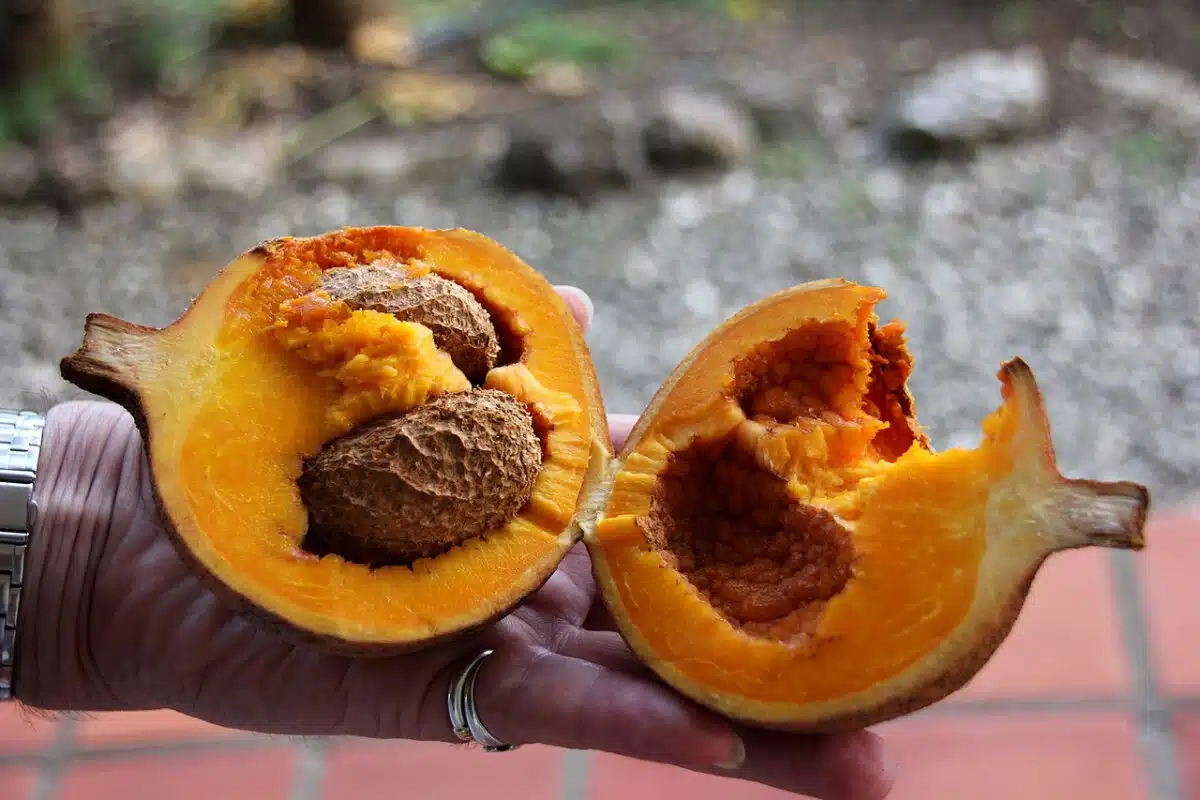
Mammee apple, santo domingo apricot, or south american apricot, is one of the most beloved fruits in El Salvador. Don’t be misguided – for Mexicans, Puerto Ricans, and other Latin Americans, mamey is a different fruit called sapote, which is botanically known as Pouteria sapota.
If you have the opportunity to try it, you should. Just be warned that mameys can be tricky to peel, so you may need assistance. Lastly, the Kolashampan, which is regarded as El Salvador’s national drink, is flavored with mamey.
3. Papayas
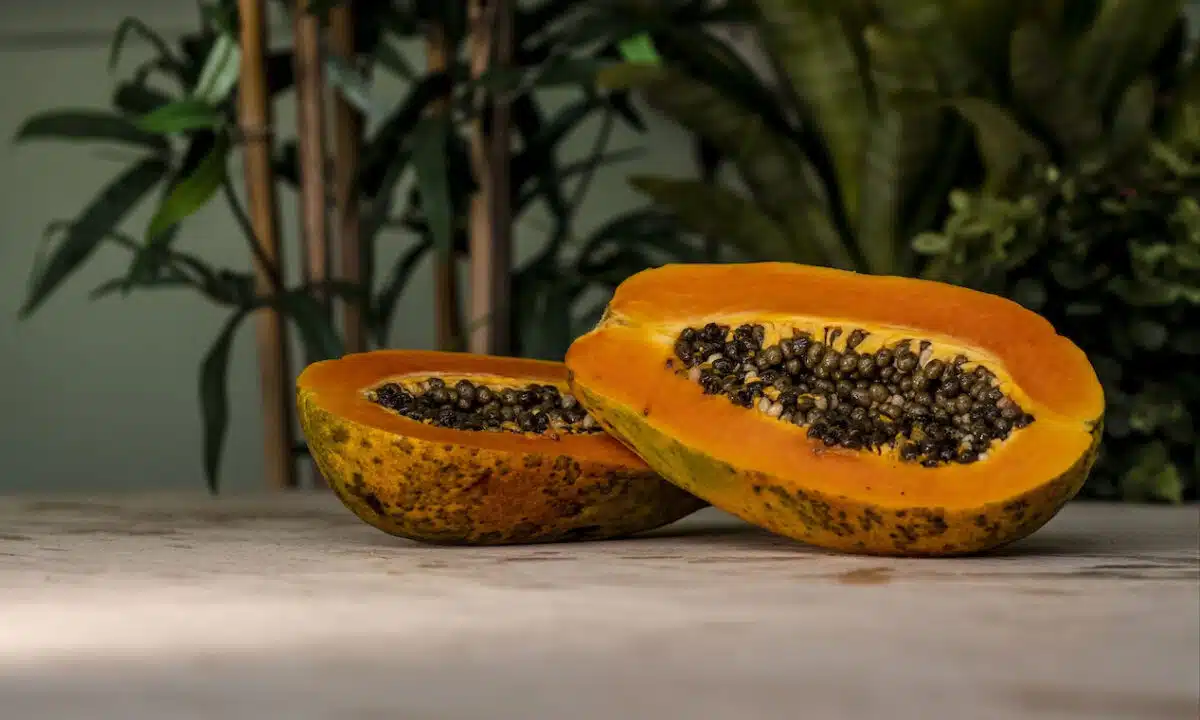
Another popular fruit in El Salvador is Papaya, which is often eaten raw, sliced or in fruit salads. They are also used in cooking, particularly in dishes like ceviche. The fruit has a yellow-orange flesh that is sweet and juicy, and it is often eaten fresh or used in salads and smoothies.
One of the most notable features of papaya is its high content of nutrients and antioxidants. These include vitamins A, C and E, as well as fibre and potassium. The nutrients in papaya make it a healthy choice for maintaining your overall health and boosting your immune system.
In addition to its delicious taste and nutritional value, papaya is also widely known for it’s digestive benefits. The fruit contains an enzyme called papain, which helps break down protein and aids digestion. Papaya is also thought to have anti-inflammatory properties, which can help reduce the symptoms of certain digestive disorders.
4. Carao
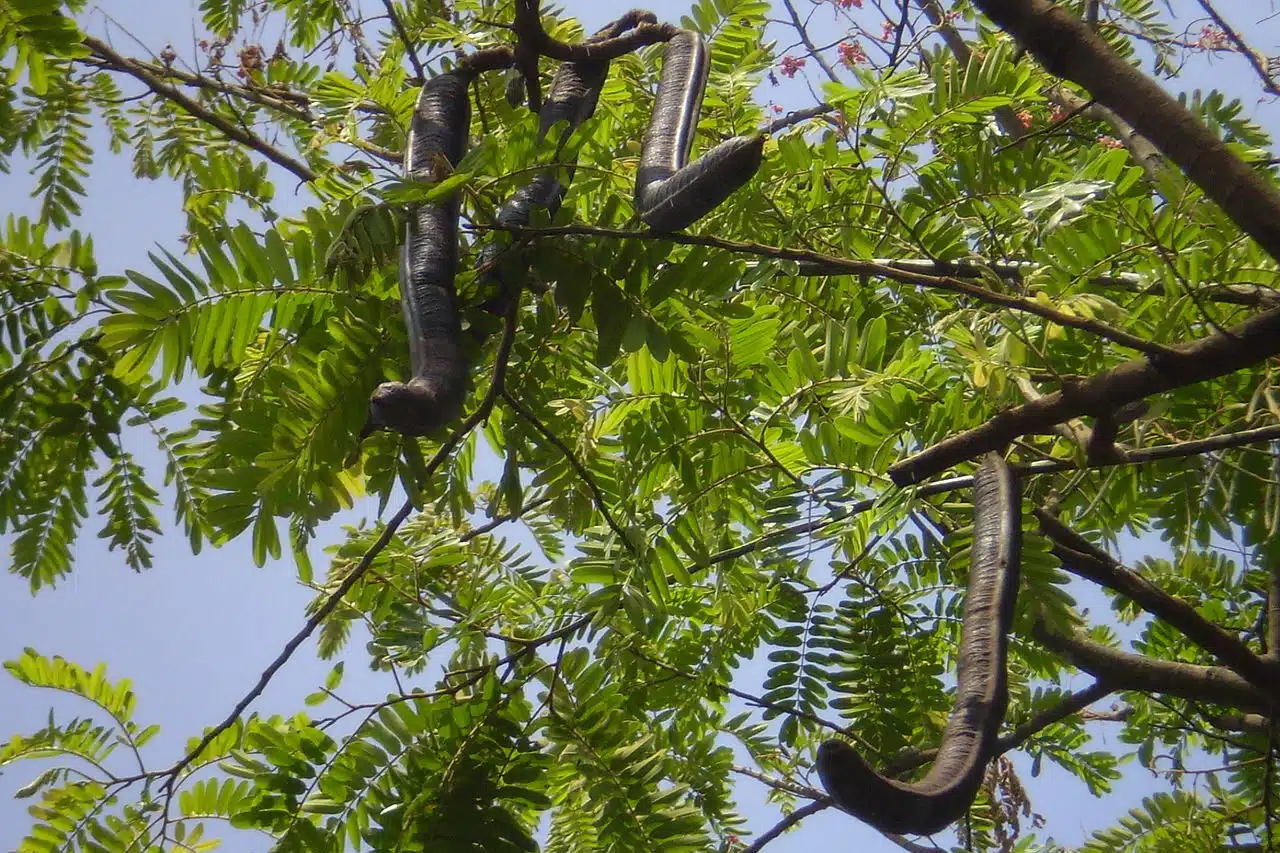
It is a small, round fruit that grows on a tree and is dark purple or black on the outside when ripe. The flesh of the fruit is soft and juicy and has a sweet, slightly tart, grape-like flavour.
Carao (or Cassia grandis) is a highly nutritious fruit, rich in antioxidants, vitamins and minerals. It is a good source of vitamin C, potassium and fibre, and also contains trace amounts of other essential nutrients such as iron, calcium and vitamin A.
One of the most notable benefits of carao is its ability to boost the immune system. The high levels of vitamin C and other antioxidants found in the fruit can help protect the body from harmful free radicals and improve overall health. Carao is also thought to have anti-inflammatory properties, which can help reduce the symptoms of certain conditions such as arthritis and asthma. It is also a popular choice for making jams and other sweet treats. Its flavour is a unique combination of carob fruit and sugar cane molasses, and it is often consumed for its anti-anemic effects.
In El Salvador, carao is often eaten fresh or used to make juices and other beverages. In El Salvador, it is typically used to flavour milk (leche con carao) and is used in many recipes. Other names for carao are cañandonga or caña fístula cimarrona. An interesting fact about carao is that a special concentrate of it is sold for its medicinal value (which is quite expensive).
If you want a unique and tasty fruit to try while in El Salvador, you should try carao.
Overview Carao
| Feature | Description |
|---|---|
| Fruit appearance | Small, round, dark purple or black when ripe |
| Flesh | Soft, juicy, sweet, slightly tart, grape-like flavor |
| Nutritional value | High in antioxidants, vitamins, and minerals. Good source of vitamin C, potassium, and fiber. Contains trace amounts of iron, calcium, and vitamin A |
| Health benefits | Boosts immune system, has anti-inflammatory properties, improves overall health, popular for making jams, consumed for its anti-anemic effects |
| Uses | Eaten fresh, used in juices and other beverages, flavored milk, used in recipes, special concentrate sold for its medicinal value |
| Origin | El Salvador |
| Other names | Cañandonga, caña fístula cimarrona |
| Recommendation | A unique and tasty fruit to try in El Salvador |
5. Pineapples
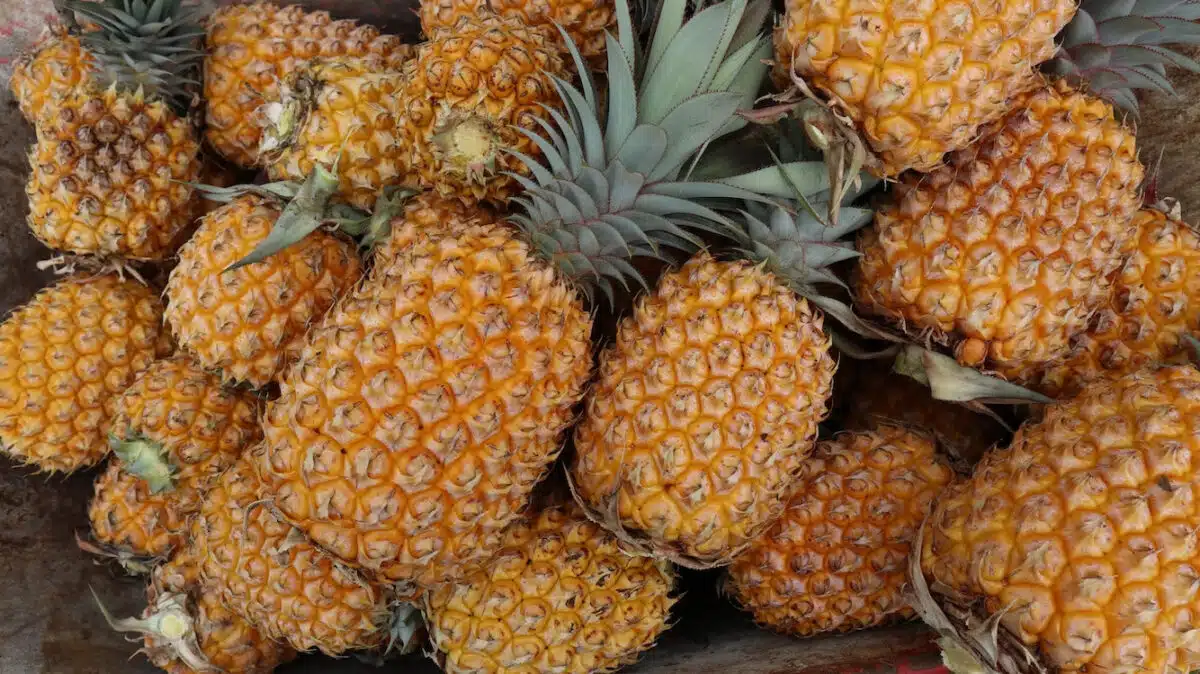
They are known for their juicy, sweet flesh and distinctive spiny exterior. A favourite with locals and tourists alike, pineapples are often eaten fresh or used in a variety of dishes and drinks.
One of the most notable benefits of pineapple is its high nutrient and antioxidant content. The fruit is a good source of vitamin C, manganese and bromelain, an enzyme that has been shown to have anti-inflammatory and digestive benefits. Pineapples are also high in fibre, which can help support digestive health and keep you feeling full and satisfied.
In addition to their taste and nutritional value, pineapples are also widely known for their potential health benefits. Some studies have suggested that the bromelain found in pineapple may help reduce inflammation and swelling, and may even have anti-cancer properties. Pineapple is also thought to have a number of other health benefits, including helping with weight loss and improving skin health.
6. Annona
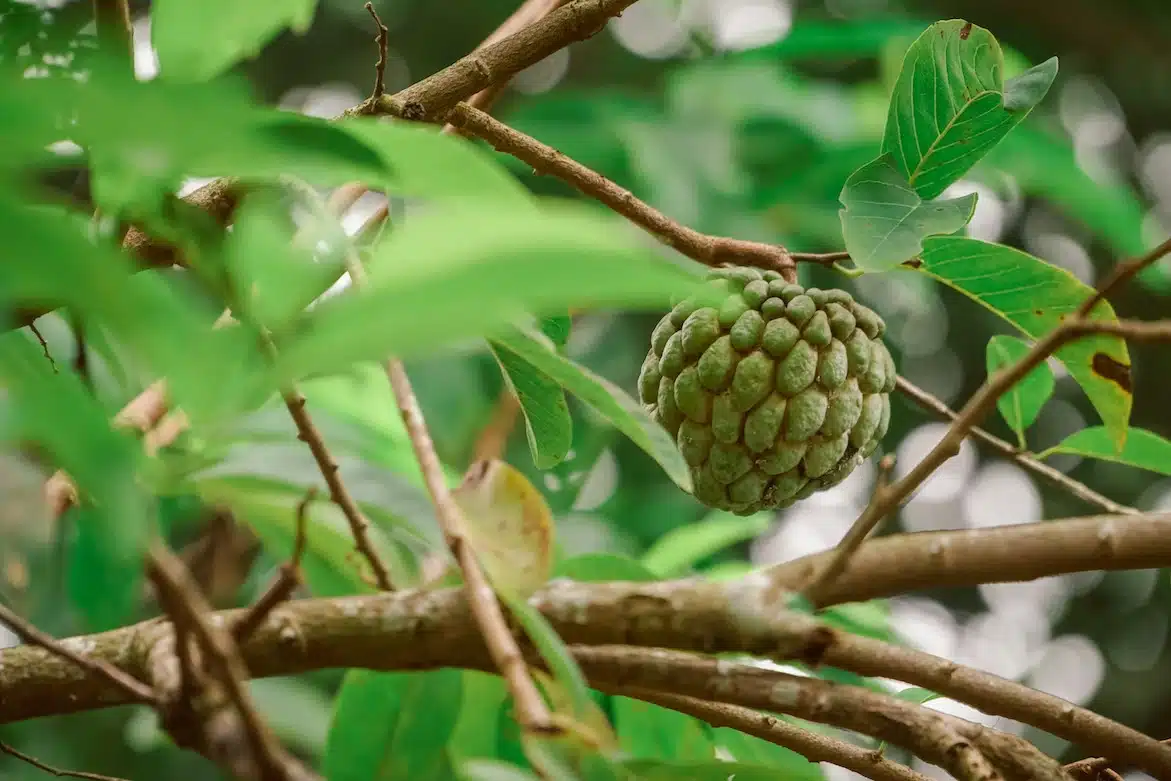
The core of the fruit or consumable segment is either white or pink. Both have a similar taste profile but the pink is more velvety. In addition to tasting exquisite, Anonas is beneficial to your wellbeing. La Annona is a delightful Salvadoran seasonal fruit available ubiquitously throughout the country, typically from June to September. During these months, obtaining scrumptious Annonas will be an effortless endeavor. Anonas possess a sugary flavor.
It is a large, spiky fruit that grows on a tree and has a green, bumpy exterior when ripe. The flesh of the fruit is creamy and soft, and it has a sweet, slightly sour taste that is similar to a combination of pineapple, mango, and banana.
Annona is a highly nutritious fruit that is rich in antioxidants, vitamins, and minerals. It is a good source of vitamin C, potassium, and fiber, and it also contains trace amounts of other essential nutrients such as iron, calcium, and vitamin A.
In El Salvador, la Annona is often eaten fresh or used to make juices and other beverages. It is also a popular choice for making jams and other sweet treats.
7. Manchineel
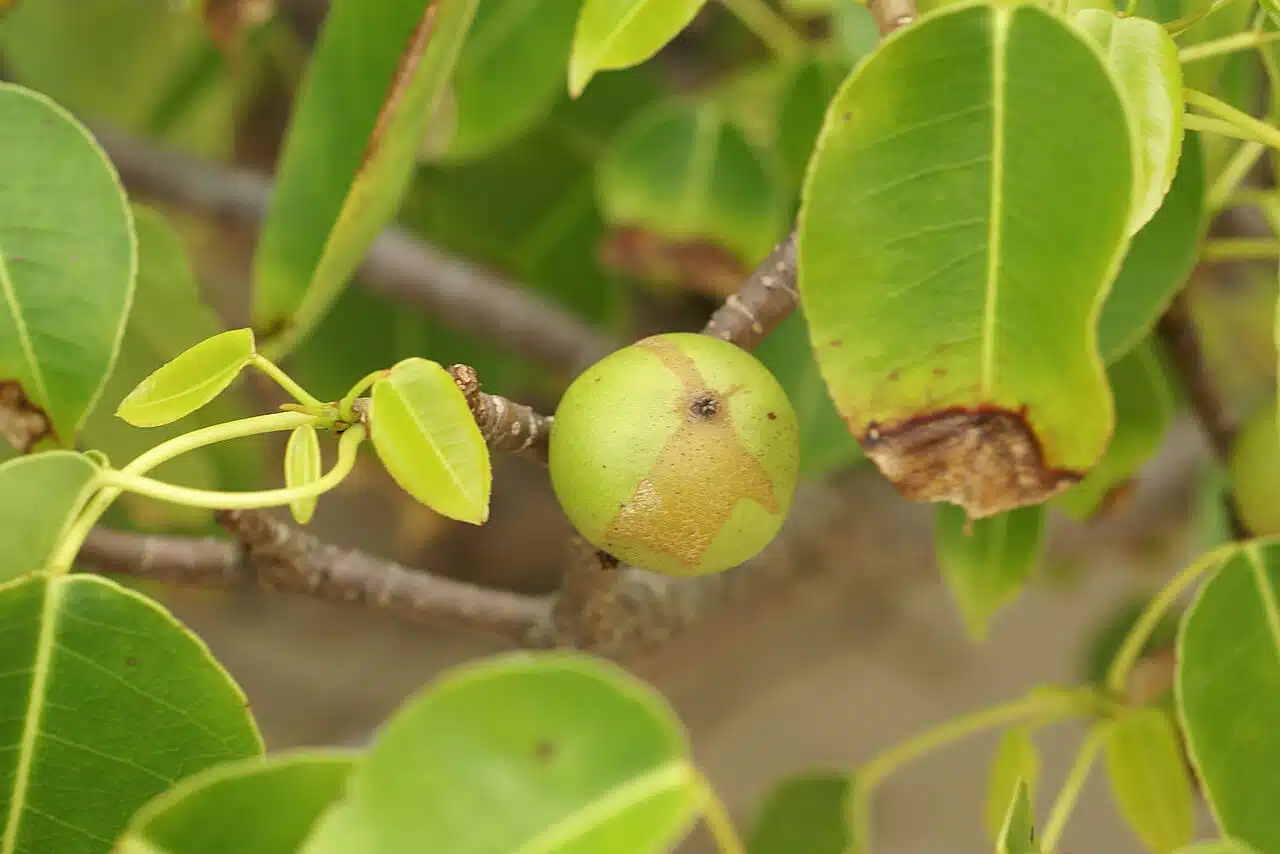
The Manchineel, otherwise known as tejocote, is a fruit originating from the Nahuatl language meaning “stone fruit“. It is a small, round fruit that grows on a tree and has a bright yellow exterior when ripe. The flesh of the fruit is soft and juicy, and it has a sweet, slightly sour taste that is similar to a combination of mango and pineapple.
Manchineel fruit is typically about the size of a golf ball and has a smooth, slightly bumpy exterior. The skin of the fruit is thin and can be easily peeled off to reveal the soft, juicy flesh inside. The fruit is yellow in color, and the flesh is firm but soft and easy to eat.
In El Salvador, Manchineel is often eaten fresh or used to make juices and other beverages. It is also a popular choice for making jams and other sweet treats. If you want to try a unique and tasty fruit while in El Salvador, be sure to try manchineel.
Initially, it is boiled until softened and peeled. Afterwards, it is placed back in the liquid and boiled with sugar, cinnamon sticks and strawberry essence for a syrupy texture due to the fruit’s high pectin content. The essence additionally gives the dessert its standard red color. Mexico and Guatemala also use it to make a traditional beverage called ponche.
8. Zapotes
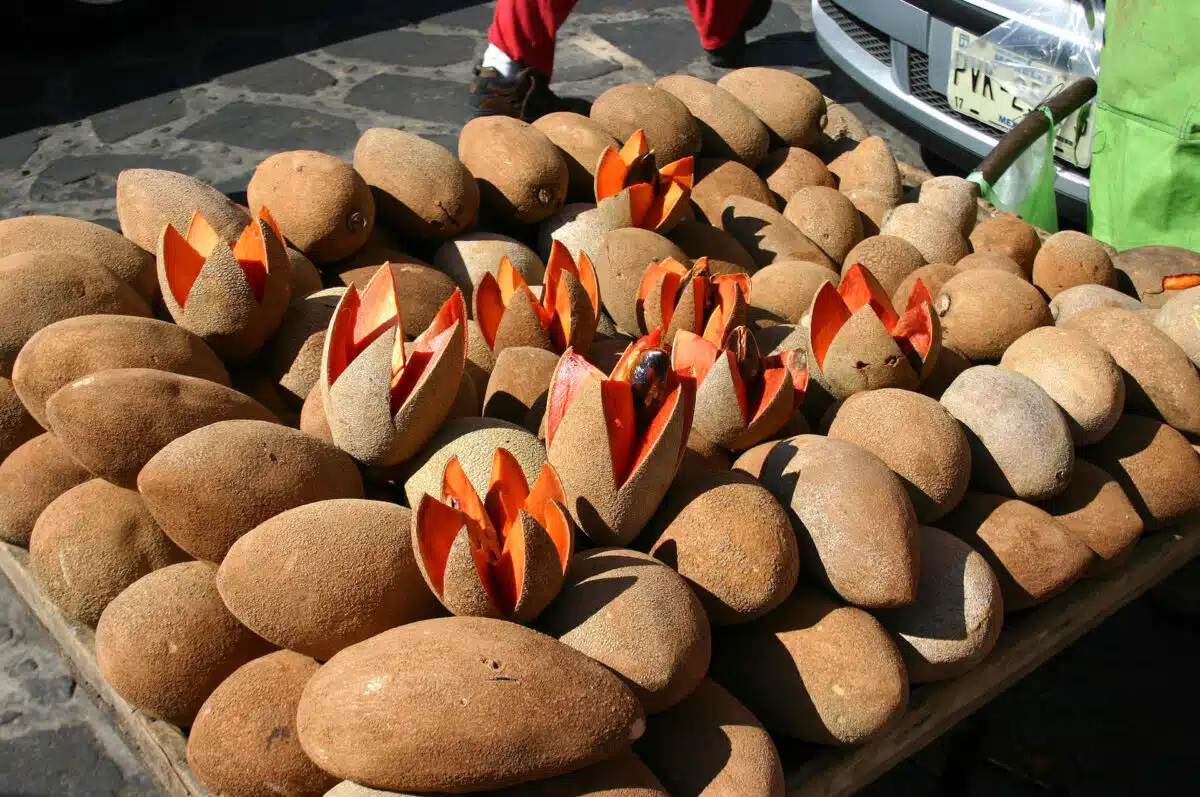
In El Salvador, Zapotes are a common fruit, especially in the country’s rural areas. This captivating fruit has an inviting and one-of-a-kind aroma and exquisite taste. The exterior of the fruit has a tender dark-hued rind, and the inside, which is the comestible portion, presents a hue combination of orange and red.
There are several different varieties of zapotes, but they are generally round or oval in shape and have a smooth, bumpy exterior. The skin of the fruit is thin and can be easily peeled off to reveal the soft, juicy flesh inside.
The most common type of zapote in El Salvador is the black zapote, which has a dark purple or black exterior when ripe. The flesh of the black zapote is soft and sweet, and it has a taste that is similar to a combination of plums, cherries, and chocolate.
Other varieties of zapotes include the white zapote and the red zapote, which have yellow and red exteriors, respectively. These varieties have a sweeter, more tropical taste and are often used in smoothies and other beverages.
9. Mamones
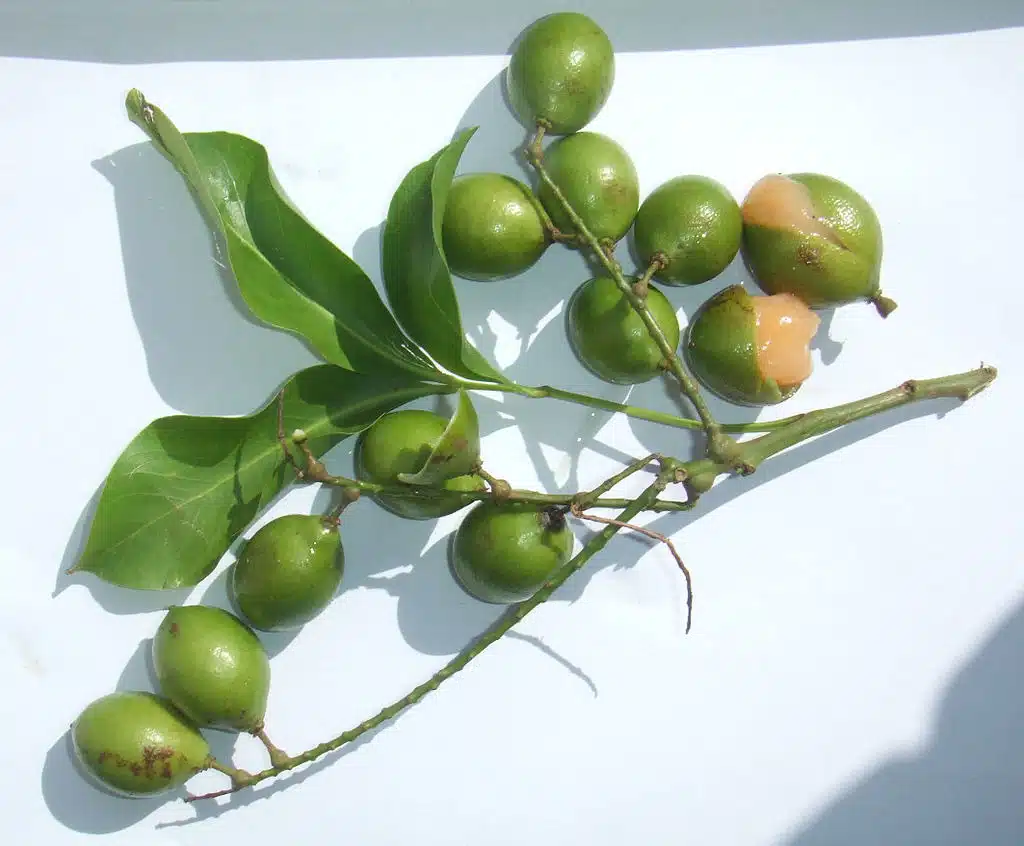
Los Mamones, otherwise known as Mamoncillos, is a tart tropical fruit native to El Salvador. This fruit is petite, emerald-hued, and orb-shaped. Its size can vary between two to five centimeters across. One can discover a pinkish-orange edible portion that encases its core when opened. This fruit has dual flavors, one being saccharine and the other being tart, creating a flavor fusion of lime and lychee.
They are small, round fruits that grow on a tree and have a bumpy exterior when ripe. The skin of the fruit is thin and can be easily peeled off to reveal the soft, juicy flesh inside.
The most common mamon variety in El Salvador is the red and green mamon, which has a red/pink and green exterior, respectively, when ripe. The flesh of the red mamon is soft and sweet, and it has a taste that is similar to a combination of raspberries and watermelon.
Other varieties of mamones include the yellow mamon, which have yellow exteriors. These varieties are slightly sour and often used in salads and other dishes.
10. Nances
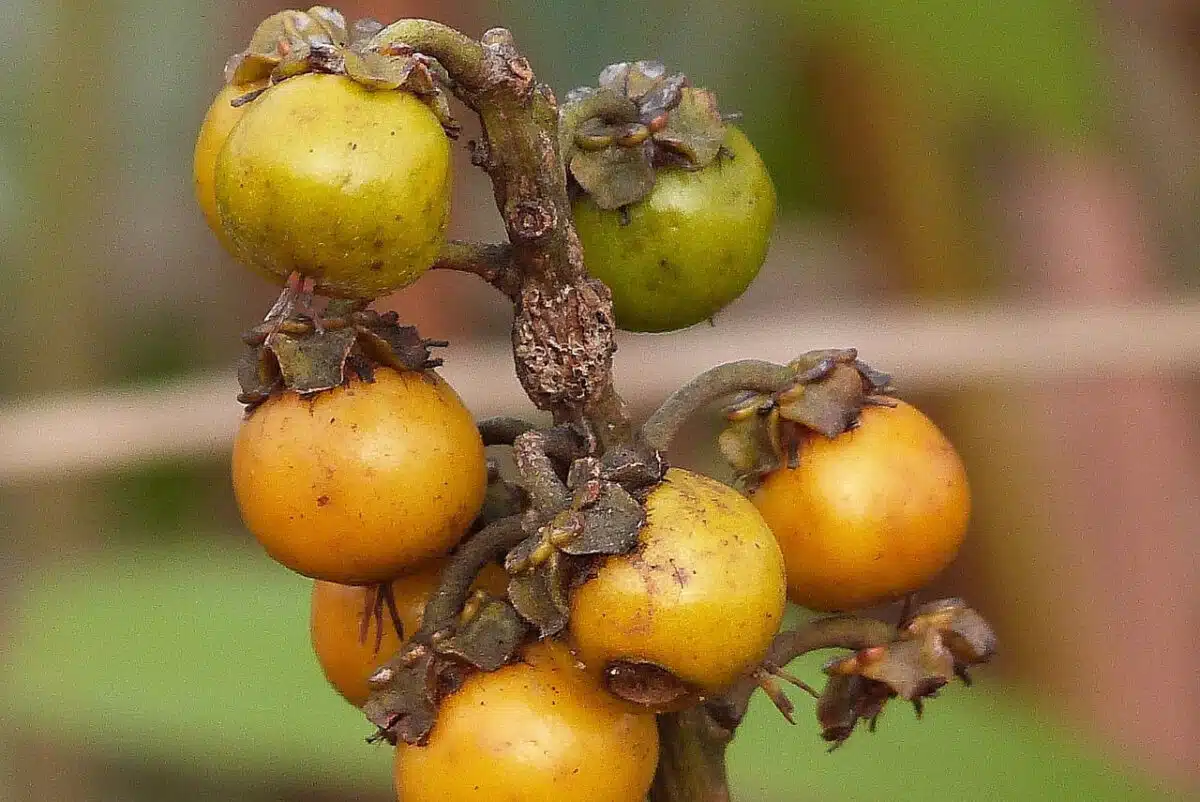
A yellow, cherry-like fruit, Nances is popular in El Salvador and Central America. Markets and street carts throughout the area offer them fresh. Furthermore, the fruit is employed to create juice, carbonated drinks, ice cream and snow cones known as raspados.
It may be preserved as manzanilla or used to make alcoholic beverages. Nances are available in El Salvador from July to August, boasting a sweet taste when ripe. Locals consume the fruit as is or whip up honey-based dishes termed “Dulce de Nances”. Nances are also fermented to produce an alcoholic beverage referred to as “Licor de Nance”.
11. Jocotes
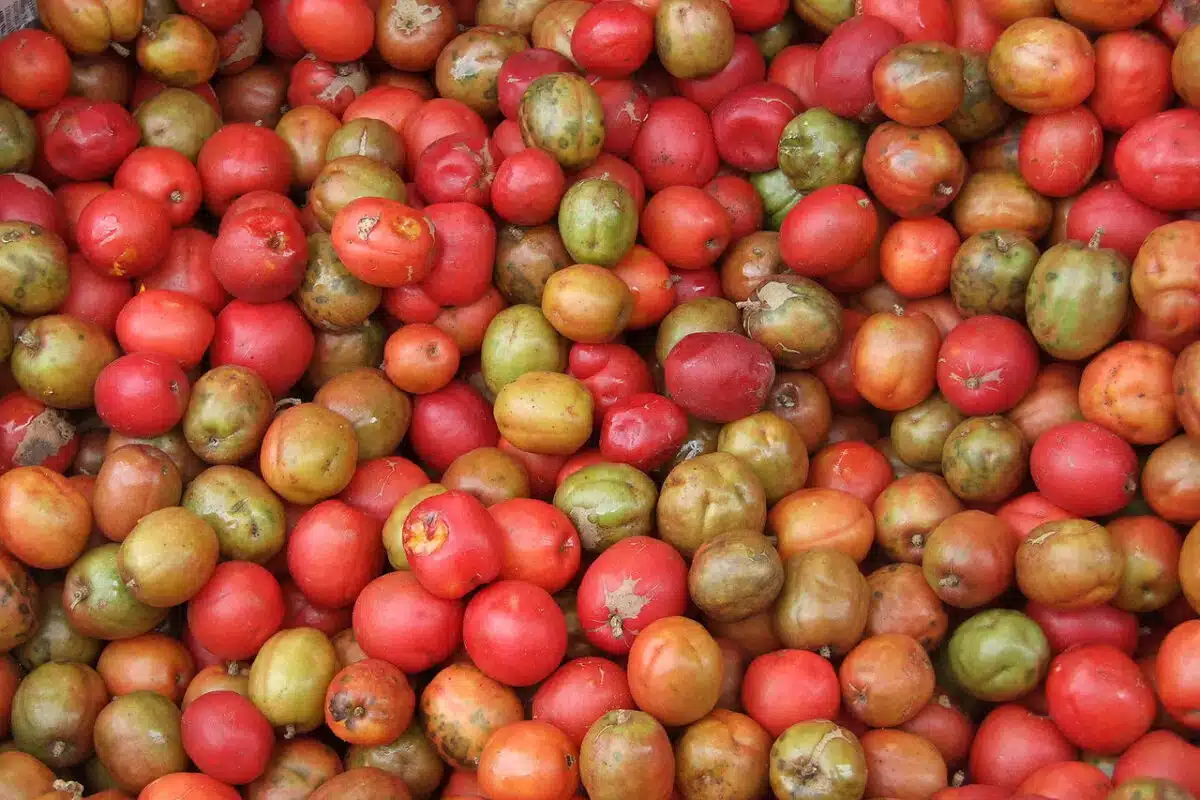
Jocote (Spondias purpurea) is a highly sought-after fruit in El Salvador, native to tropical regions of the Americas and belonging to the cashew family. They are small, round fruits that grow on a tree and have a bumpy exterior when ripe. The skin of the fruit is thin and can be easily peeled off to reveal the soft, juicy flesh inside.
It derives its name from the Nahuatl word, xocotl (“sour fruit”) and its flavor is a combination of sweet and sour. Popular preparations of jocote include a syrup made with unrefined cane sugar, mango, and jocote, and traditional beverages such as Licor de Nance and Conserva de Jocote.
The three most popular types of jocote are Baron, Azucaron, and Corona. Jocote Baron is harvested during the dry season or summertime, between February and April, and has a red color and a sweet-sour taste when ripe. Azucaron Jocote is smaller, with a green peel and a sugary flavor throughout.
Corona Jocote is harvested during the rainy season or winter, from late July to October, and has a sweet taste and a large seed with little edible pulp. Its peel is a blend of red, green, and bright yellow colors. During the holy week in El Salvador, some stores or families make a traditional Jocote dish with honey.
12. Granadilla
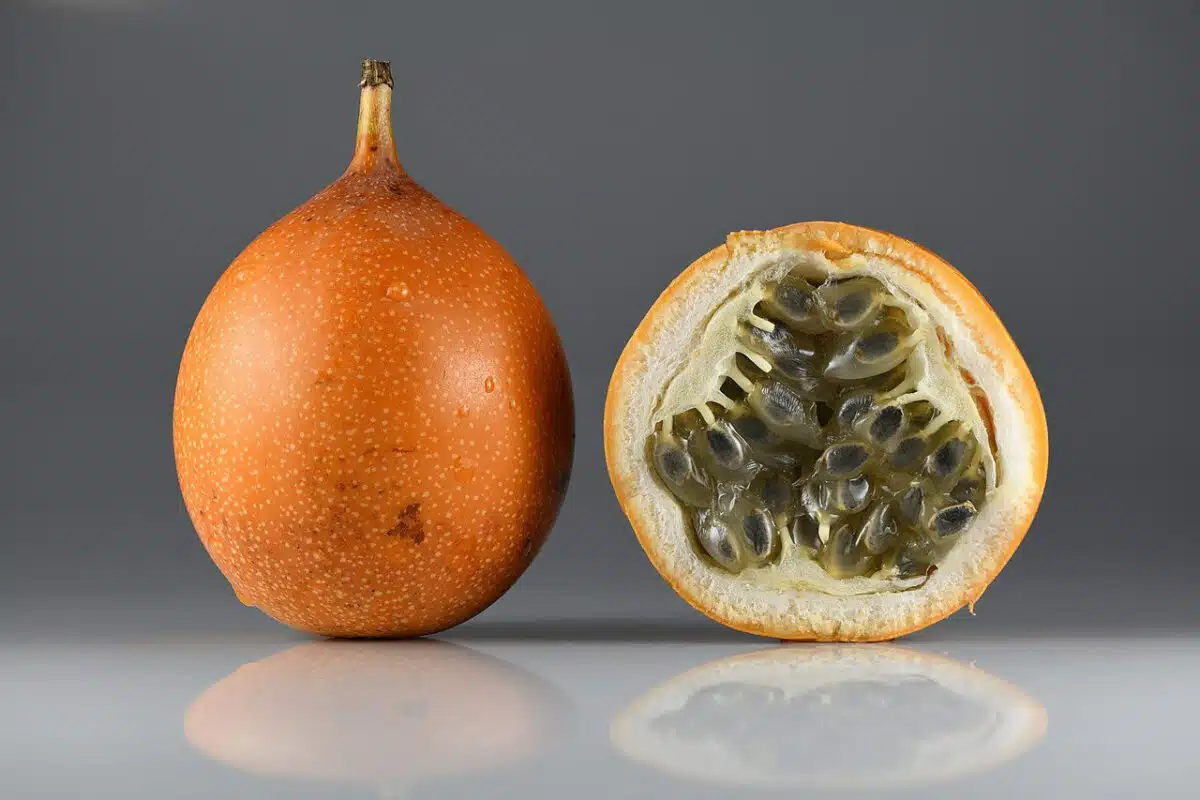
A granadilla is a tropical fruit native to South America. It is oval-shaped and has a yellow, orange, or reddish-orange exterior. The fruit has a soft, leathery skin and a juicy, orange-colored flesh that is full of seeds. The flesh of the granadilla is sweet and flavorful, with a taste that is often described as a combination of strawberry, passion fruit, and mango.
The seeds are edible and often swallowed along with the fruit, although some people remove them before eating them. The fruit is often enjoyed as a refreshing and tasty snack, and is also used in a variety of culinary dishes and desserts.
While passion fruits and pomegranates are typically tart, granadillas are sweet. Although some individuals consume the entire granadilla. However, the juice is an entirely different story! It is so delightfully heavenly!
13. Marañon
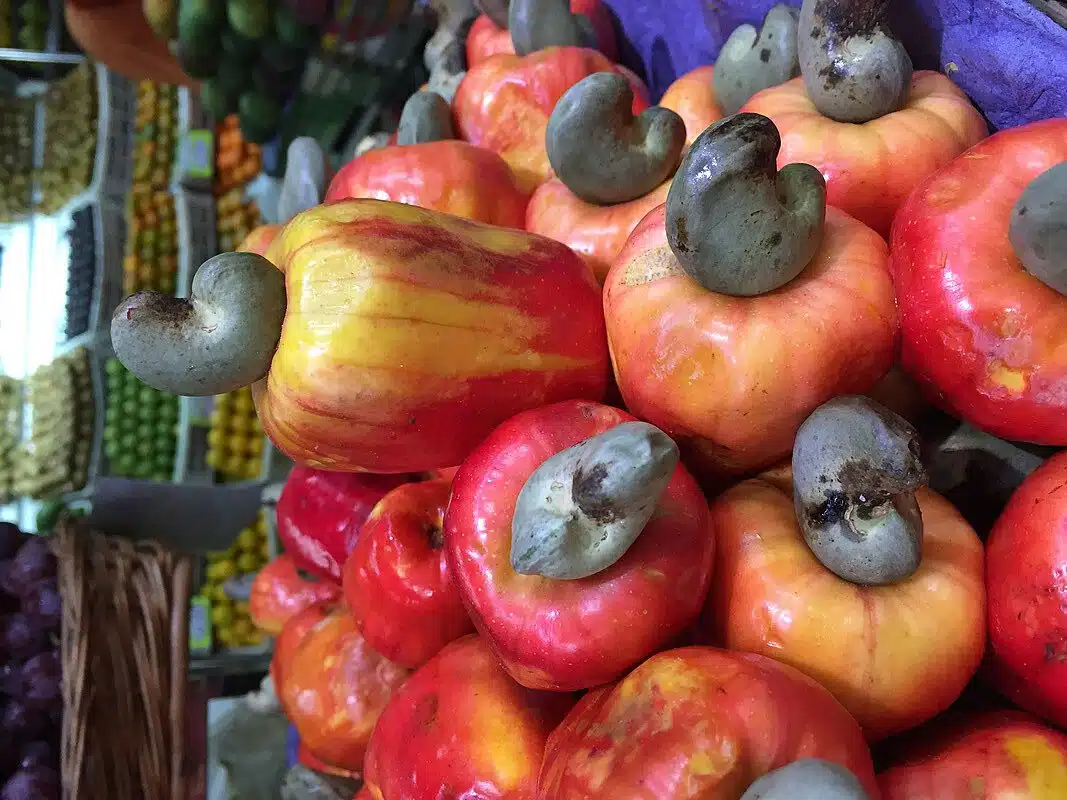
Marañones (Cashew Apple), a typical Salvadoran fruit, is recognised for its juicy, sweet-acidic taste. This fruit can be consumed raw, made into a tropical juice with water and sugar or even used to create fermented homemade alcoholic beverages. Cashews, one of the most popular and tasty nuts, are derived from Marañones and are a popular snack, especially during the Marañon season.
The four main types of Marañon found in El Salvador are red, orange, pink and yellow; all having distinctive tastes. Cashew fruit is known as “Marañon” and the cashew nuts as “semillas de marañon” in El Salvador.
Additionally, the Portuguese word for the fruit is caju. An important note to consider is that when eating the fruit, one should be careful not to get any of the liquid on their clothes as it is said to produce a stain that cannot be removed.
Furthermore, it is incredibly difficult to extract the cashew nut from its shell; in industrial settings, heavy machinery is used. In El Salvador, people roast the nut over an open fire until it is ready to remove the shell.
14. Paterna
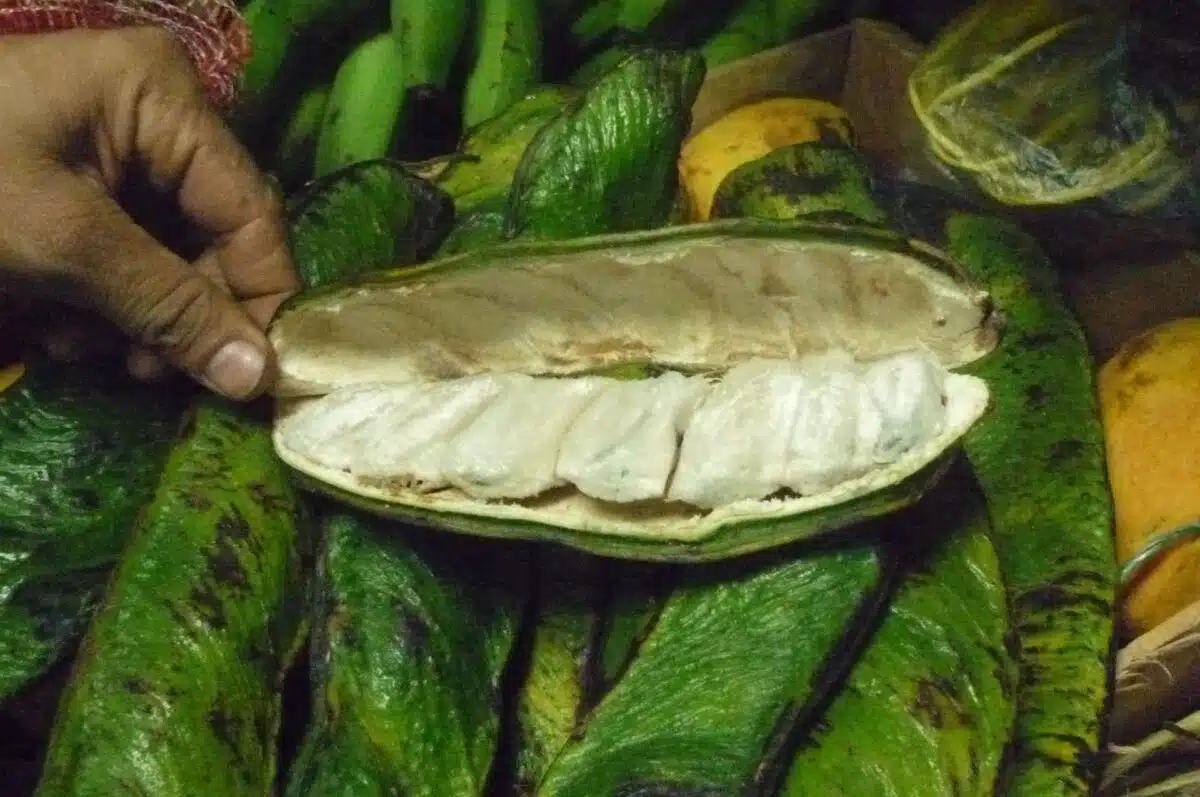
The Paterna (Inga) is not a type of fruit, but instead a pod containing a line of black seeds that are covered in a fluffy and sweet coating, similar to a marshmallow pocket. The edible portion of the Paterna is the white, sugary covering, which is a favorite among children.
The seeds within the pod are inedible as they are quite hard, but can be cooked and consumed with salt and lime. This plant is often found growing around coffee farms or other regions with dense vegetation. One must boil the seeds until they become soft to prepare them for consumption. Nothing is wasted in this country, as the Paterna fruit is able to be enjoyed in its entirety.
Some other Fruits in El Salvador
Some of the most popular and commonly found fruits in El Salvador include:
- Melons: Melons are a refreshing and juicy fruit that are widely grown and enjoyed in El Salvador.
- Guanabanas: They have a rough, green exterior and a soft, white flesh that is sweet and juicy.
- Tamarind: Tamarind is a tropical tree that produces a fruit with a brown, wrinkled exterior and a sour, tangy flesh.
- Plantains: Plantains are a type of banana that is larger and firmer than regular bananas.
- Avocados: Avocados are a nutritious and tasty fruit that are native to Central and South America. They have a green, bumpy exterior and a creamy, rich flesh that is high in healthy fats and nutrients.
- Arrayan: It has a round, red exterior and a sweet, juicy flesh. It is often eaten fresh or used in cooking and baking.
- Manzana Rosa: It has a bright pink exterior and a sweet, juicy flesh that is often eaten fresh or used in cooking and baking.
- Marañon Japonés: It has a yellow or orange exterior and a sweet, juicy flesh.
- Chaparron: It has a green, bumpy exterior and a sweet, juicy flesh. It is often eaten fresh or used in cooking and baking.
- Nispero: It has a yellow or orange exterior and a sweet, juicy flesh. It is often eaten fresh or used in cooking and baking.
Or many more like Chaparron, Guinda, Matasano, Sincuya, Jabaticaba ,Pepenance, Caimito, Sunsapote…
Summary – Fruits in El Salvador
If you’re planning a trip to El Salvador, be sure to try some of these delicious and exotic fruits. As a traveller in El Salvador, you’ll have the opportunity to indulge in a variety of delicious, locally sourced ingredients.
The country is renowned for its rich culinary heritage, and you’ll find markets and street vendors full of fresh and tasty produce. The options are endless, from juicy mangoes to crisp pineapples. Be sure to try the fresh juices, smoothies and other drinks made from these vibrant fruits – they’re sure to be a highlight of your culinary journey!
And, of course, many traditional dishes using these ingredients are worth exploring. So be adventurous, try new things and enjoy the flavours of El Salvador!
Thank you for reading the Fruits in El Salvador! You can find more el salvador articles here: best places to visit in el salvador or our el salvador blog!
- A Milestone in North Korea Tourism: Russian Tourists Arrive - January 14, 2024
- Rediscovering China’s Skies: China International Flights Recovery - January 7, 2024
- Exploring the Philippines: A Record-Breaking Tourism in 2023 - January 7, 2024

